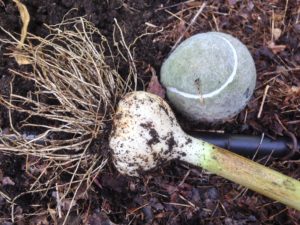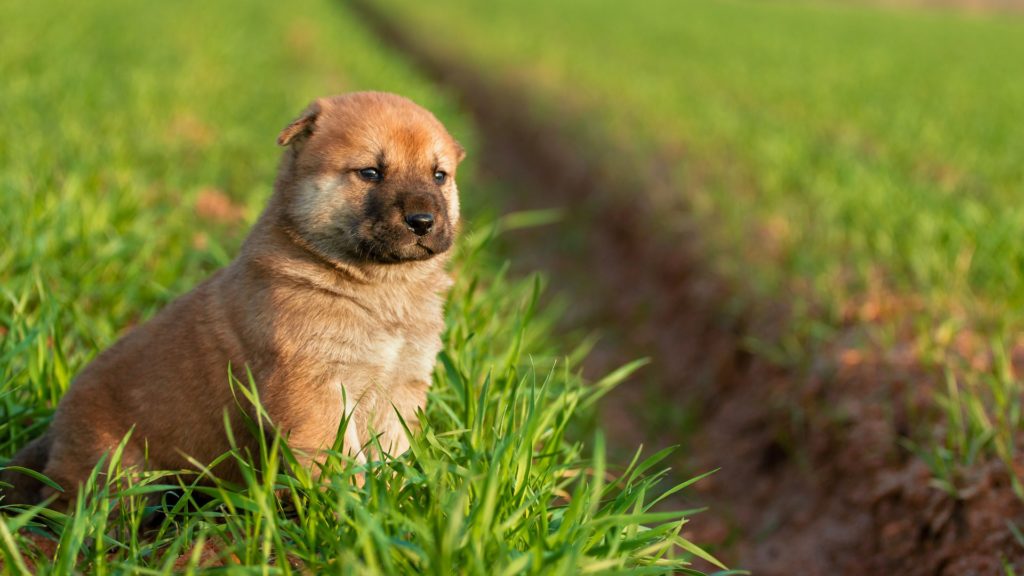 Believe it or not, now is the time to consider next year’s garlic because:
Believe it or not, now is the time to consider next year’s garlic because:
- You’re going to want to plant it by Halloween, at the latest, and,
- Preferred vendors are going to sell out of some varieties fast.

There are a gazillion posts about when and how to harvest garlic all over the interwebs. They’re all variations on the same theme and they’re all generally accurate, but I want to add a bit of perspective for the typical home gardener growing a few head of garlic rather than a field of them. Continue reading
Last year the garlic had nematode issues. So after eight years of using our own garlic for both eating and sowing next year’s crop, we bought new heads from two highly regarded, reputable growers in the northeast with high hopes and dreams of big heads of stinking rose.
Our dreams weren’t dashed, but they didn’t turn out as planned. Continue reading
The titillating title is for real, and the subject always makes someone blush. There are indeed two types of squash flowers: male and female.
A few days ago I wrote a bit about why intentionally putting sticks in the compost makes no sense.
I want to address this a wee bit more to explain why the sticks don’t decompose in your home compost in a time frame most people find acceptable. This is going to require a bit of science but not too much, and there’s chocolate at the end, I promise.
My first experience with drip irrigation was as a teenager living on a kibbutz in Israel. I think it was controlled by some sort of DOS based system running on a computer in a hut at the edge of the date fields. Each irrigation line had to frequently be unclogged, the system required constant maintenance and the whole thing seemed confusing and cumbersome.
That’s not the case anymore, especially for home gardens.
For years I have told classes “If you put sticks in, you’ll need to pull sticks out,” and here’s an example of why: That’s a big bucket of sticks, raspberry canes and similar woody items I pulled from the finished 1 cubic yard compost bin behind it.
It is basically the same amount of sticks I put into the bin in the first place, meaning they were useless in the compost.
I ran this little experiment so you don’t have to, and because I’ve grown tired of the refrain that one should put sticks in compost, whether to increase aeration – as if those pores don’t get filled with other materials – or for other reasons. Continue reading

So you want to have a weed free lawn that’s still safe for the kids and puppy. It is possible, but we may need to redefine our expectations of “weed free.”

Maintaining a monoculture of anything is difficult, and grass is no exception. Consider farms that are hundreds of acres of just one crop and the efforts they go to maintain it. In New England, the lawn grasses we grow are not native, which means they require care. To some people and companies that means significant care in the forms of water, soil pH adjustment (lime), nutrients (compost and fertilizer), herbicides, mowing, aeration and more.
All of this makes planting native species that require little to no care very attractive. However, most of us still want some “patch of green” to call our own for a variety of reasons. That’s doable, without too much work, but accept that weeds will appear and dealing with a few is a worthwhile trade off for Fido and the kids.
So let’s talk about growing a weed-less lawn in suburbia.
Continue reading
No, not that thatch. By Ossewa [CC BY-SA 4.0 (https://creativecommons.org/licenses/by-sa/4.0)], from Wikimedia Commons
Studies from turf divisions of top-rated ag schools (as well as turf companies) agree on a few key points: Continue reading